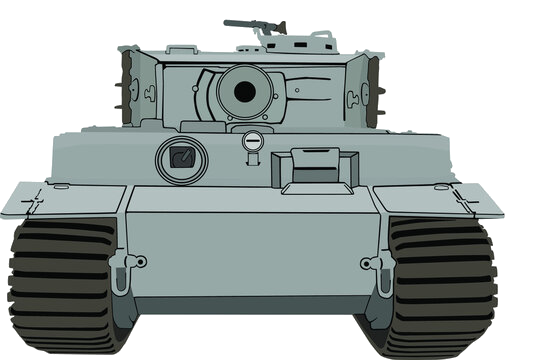Tiger Tank Specifications

This is a interactive blueprint for you to learn more about the specifics of the Tiger Tank
The Tiger I was a German heavy tank that became infamous for its formidable firepower and thick armor during World War II. Armed with an 88mm gun and weighing around 54 tons, it was designed to take on the toughest Allied armor. While it was highly effective on the battlefield, its mechanical complexity, fuel consumption, and slower speed limited its numbers and operational reach. Despite these challenges, the Tiger I had a significant impact during its deployment, especially in the early years of the war.
Battle of Kursk (July - August 1943): The Tiger tanks were a key part of the German forces
during the largest tank battle in history. Though they inflicted heavy casualties on Soviet armor, the
overwhelming numbers of T-34s and strategic Soviet tactics led to a decisive German defeat.
Operation Citadel (July 1943): As part of the German offensive to recapture the initiative in the Eastern
Front, the Tigers played a critical role in early stages of the battle but were eventually bogged down by
Soviet counterattacks.
Battle of the Bulge (December 1944 - January 1945): The Tiger I was used in the German counteroffensive in the
Ardennes, where it played a prominent role in the offensive's initial successes, before being hindered by
mechanical issues and Allied resistance.

The German Tiger Tank: A Legendary World War II Weapon
The Tiger tank, officially known as the Panzerkampfwagen VI Tiger Ausf. E, was one of the most formidable armored vehicles of World War II. Developed by Nazi Germany, this heavy tank first entered service in 1942 and quickly became a symbol of German military engineering prowess. Weighing approximately 54 tons, the Tiger tank was significantly heavier and more powerful than most Allied tanks of its time. Its most distinctive features were its thick, sloped armor and the legendary 88mm gun, which could penetrate enemy tanks at distances far beyond typical combat ranges. This combination of heavy armor and superior firepower made the Tiger a feared opponent on the battlefield. Despite its impressive capabilities, the Tiger tank was complex and expensive to produce. Each tank required extensive resources and skilled labor, which ultimately limited its overall impact on the war. Mechanical reliability was a persistent issue, with many tanks breaking down due to their intricate design and the harsh conditions of combat. The tank's combat effectiveness was legendary - a single Tiger could often destroy multiple enemy tanks before being seriously challenged. Its psychological impact was perhaps as significant as its physical capabilities, striking fear into Allied tank crews and infantry alike. By the war's end, approximately 1,347 Tiger tanks had been produced, making it relatively rare compared to other tank models of the period. Today, it remains an iconic symbol of World War II military technology and German engineering.
